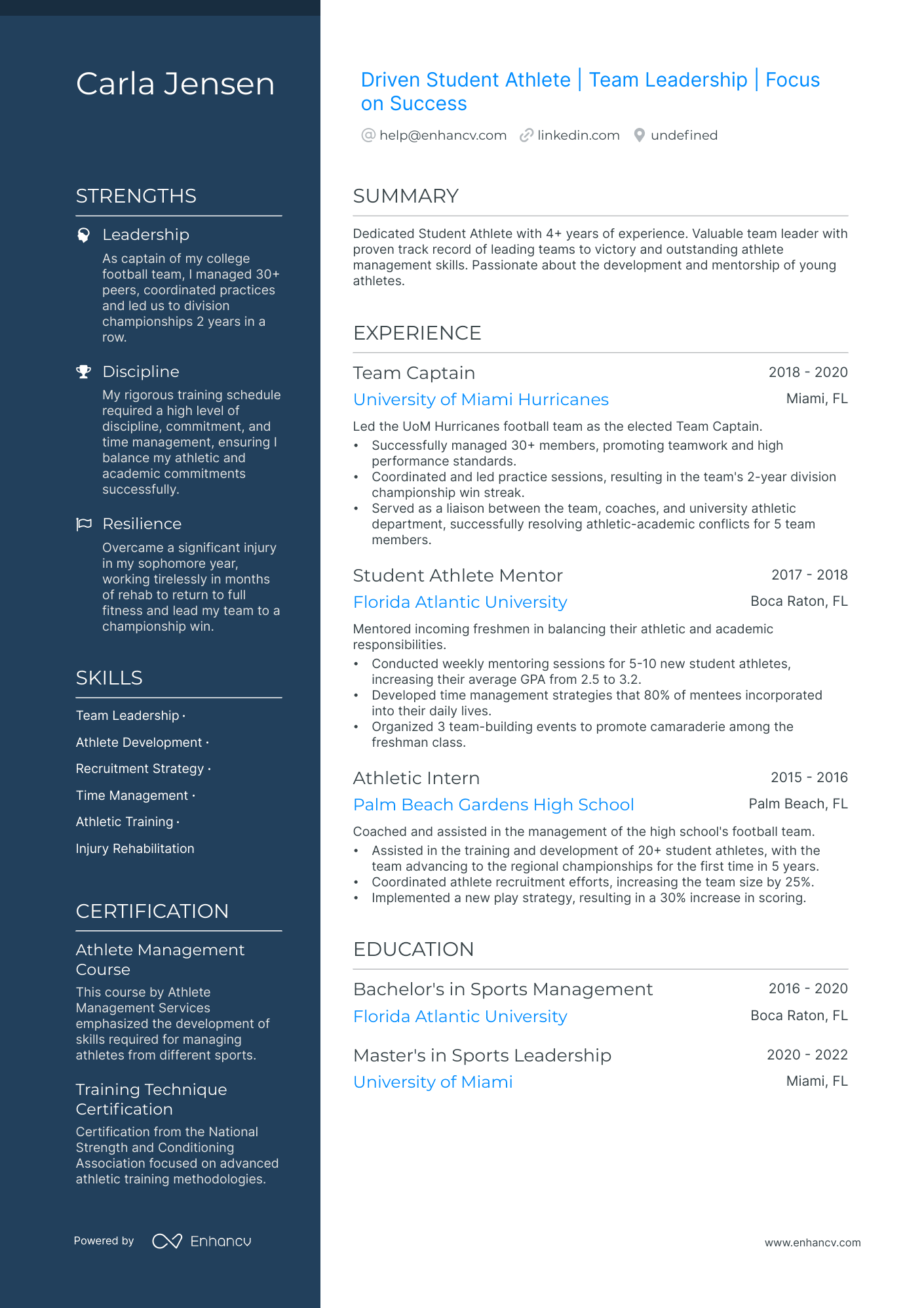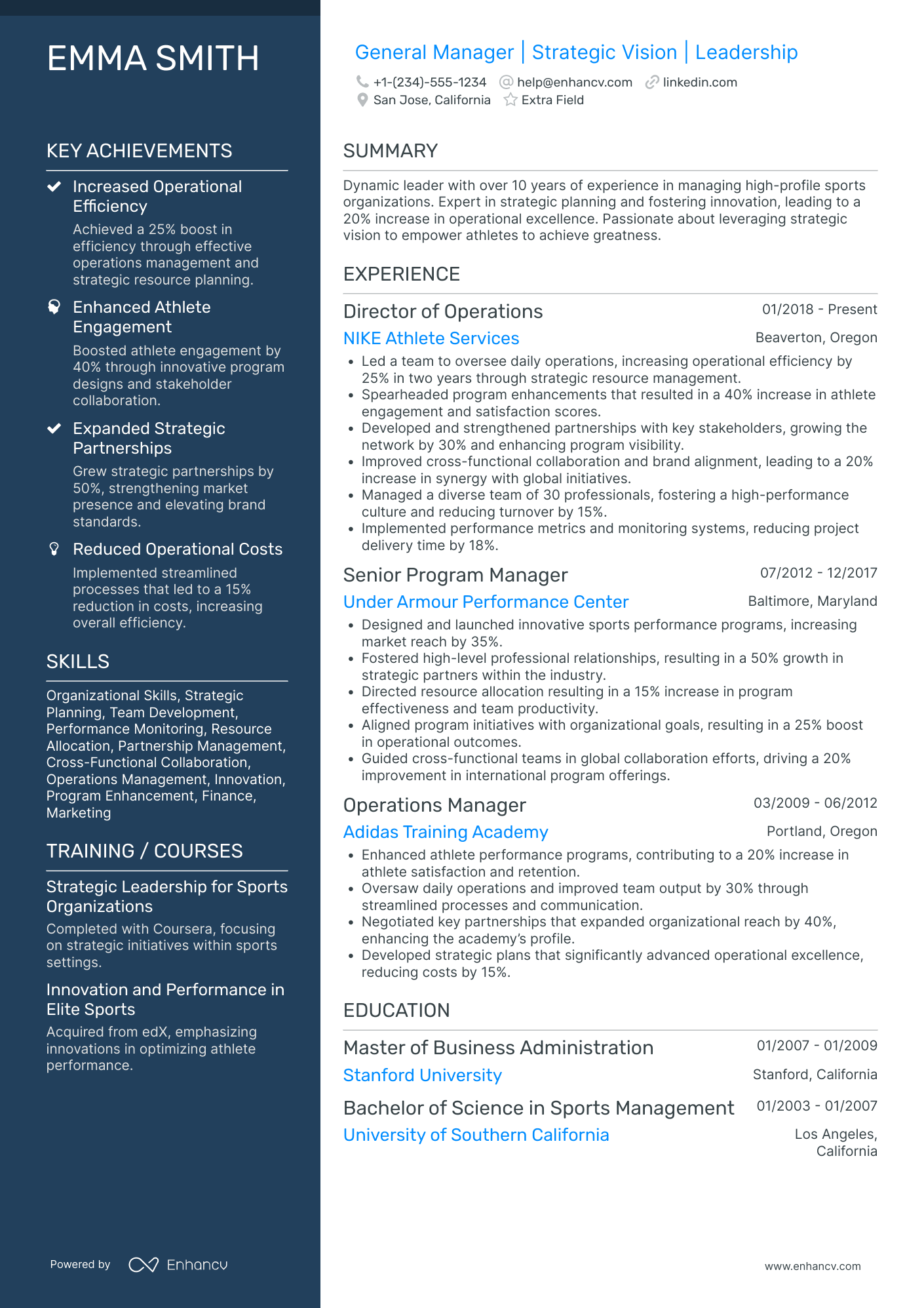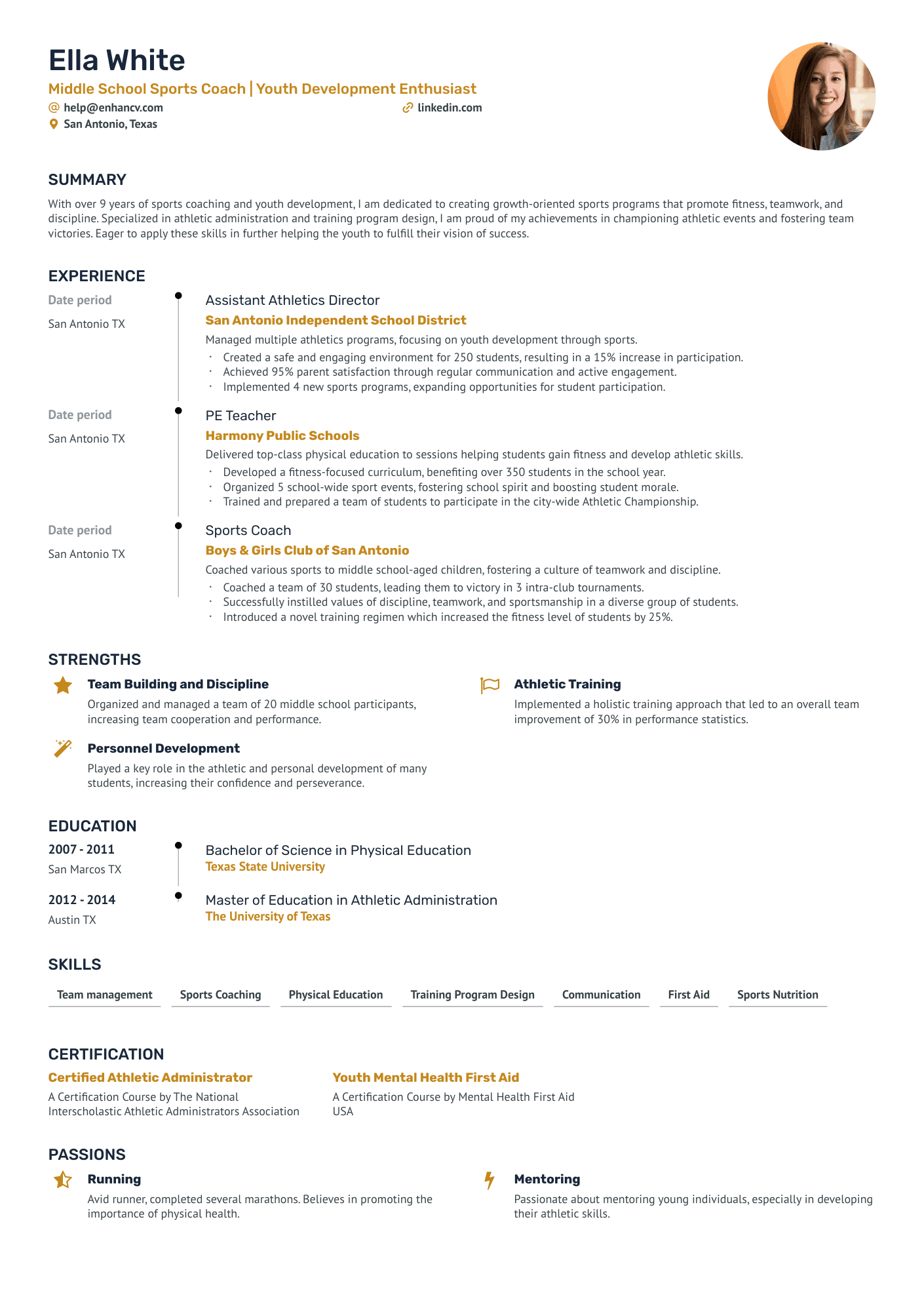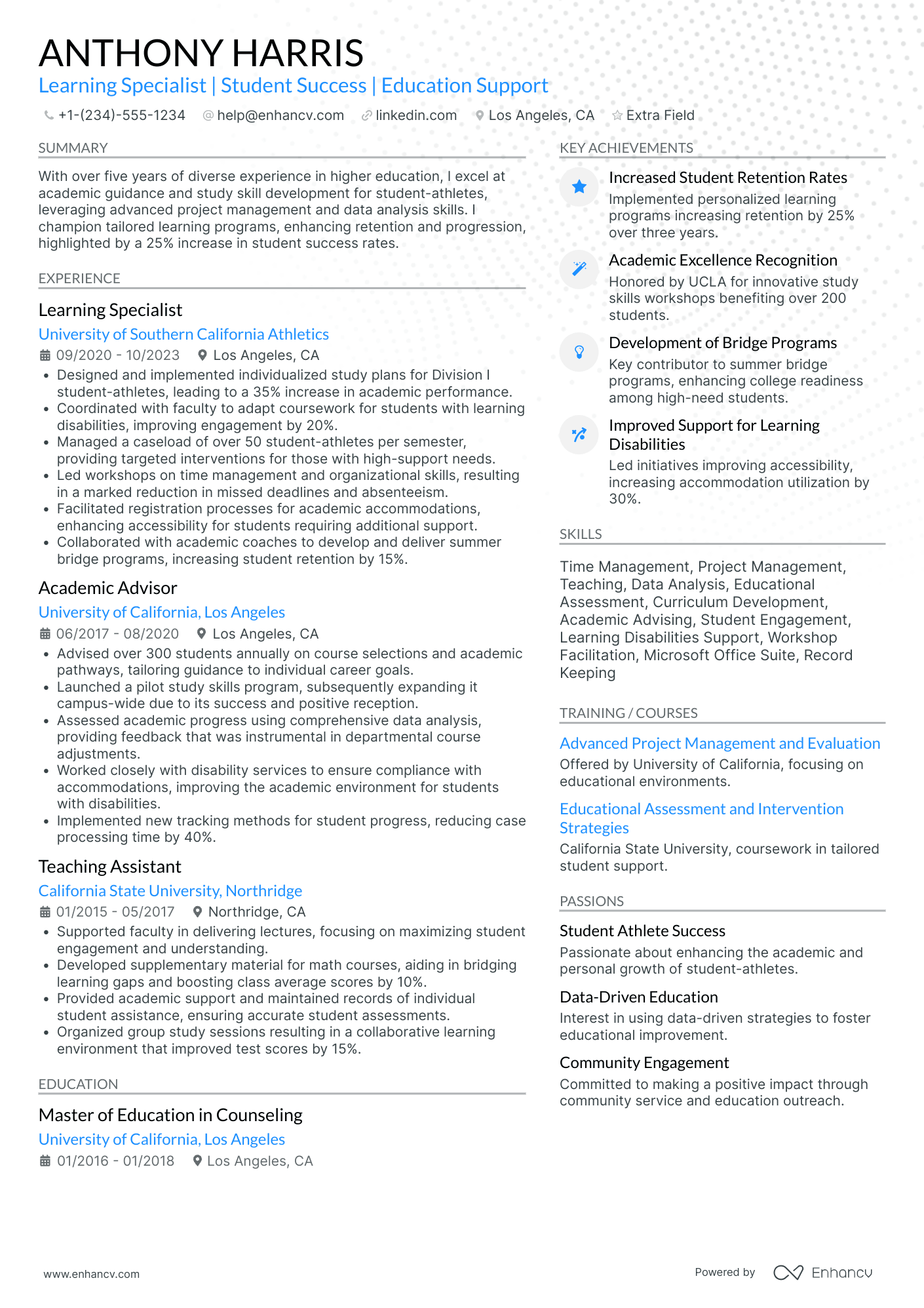Athletes often encounter difficulty in translating their sports experiences into marketable skills on their resumes. Our examples can guide you in effectively showcasing your transferable skills and achievements. Dive into the following examples to enhance your resume effectively.
Athlete resume examples
By Experience
By Role











































